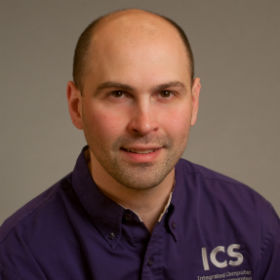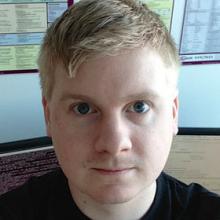|
Strategy Insight: Build Your World with QtConsumers not only expect an intuitive, custom & beautiful application UI and/or device with no performance compromise, they also have fast changing requirements where it is expected more and more that there is a fast and seamless integration of services between various screens. Product companies must be able to adapt quickly to such fast-paced changes to keep a competitive advantage. Join Lars Knoll to hear about Qt’s latest features and functions which enable various industries to adapt to change quickly transforming how we interact with everyday products in our home, transportation, entertainment and more. Attendees will gain valuable insights on where Qt is heading to further support the Internet of Things (IoT), security, 3D capabilities and features beyond touch UIs as requirements evolve. To conclude, Lars will give an overview of key features expected in the upcoming Qt 5.5 release that will make it easier for companies to create future-proof connected applications and devices development to be prepared to connect & build your world with Qt. Presenter Bio:Lars Knoll is The Qt Company, Qt CTO and Qt Project, Chief Maintainer. He has been working on Qt for more than 12 years starting as a software engineer to later leading the global Qt engineering team in Nokia before the Digia acquisition in October 2012. Lars has been an active member of the KDE community and the architect behind KDE's HTML rendering library that formed the basis for the WebKit open source project. Lars holds a PhD in physics from the University of Heidelberg. He is German national and lives with his family in Oslo. |
|
Best Practices in Qt Quick/QMLThis one hour presentation will cover some of the more complex areas of QML and present tips, tricks, best practices and common areas of error and confusion. The material is based on real-world experience developing customer applications for mobile, embedded and desktop. The topics covered will include some or all of the following: Anchors - QML offers a flexible and useful way of binding properties between objects but, if used incorrectly, can have a negative impact on application performance. For visual items, anchors offer a better implementation option. Integrating C++ and QML - Even though much Qt functionality is exposed to QML and Qt 5's JavaScript interpreter uses a high performance JavaScript engine, there are cases where you will need to integrate C++ code with QML. We'll present the fundamentals of this integration and study some specific cases. Data Models and Views - This will cover support for data models and views in QML including static models, dynamic models, delegates and using C++ models with QML views. Keyboard Input Handling - QML provides the means to handle keyboard input at either a fine-grained or high level. There is convenient built-in functionality for tab and arrow key navigation and forwarding of input events. The rules defining how keyboard events are processed are simple, but one needs to pay attention to several important details (as well as to the behavior of the built-in QML items) to get the right behavior. From the Trenches: Lessons Learned from Real World QML Projects - We will describe some lessons learned from large customer projects that used QML, looking at some architectural decisions and design patterns that worked well and some that did not. We'll cover some common errors when first using QML and ways to avoid performance problems. Suggestions will be presented on how to divide up a system appropriately between QML, JavaScript and C++ code. Time will be allotted to answer questions from the audience. Presenter Bio:Justin is a Senior Consulting Engineer and Qt Certified Instructor at Integrated Computer Solutions, Inc. (ICS). He has taught Qt and Qt Quick/QML material for both public and on-site courses for many years. He has also written and conducted seminars on Object-Oriented GUI Design techniques. Justin has a degree in Computer Engineering Technology from Northeastern University and enjoys gadget tinkering, fixing cars and playing hockey in his spare time. |
|
State of the Art OpenGL and QtOpenGL is a powerful, low level graphics toolkit with a steep learning curve that allows access to accelerated GPU hardware. Using OpenGL developers achieve high-fidelity, animated graphics ubiquitous in games, screen productions and scientific software. Due to OpenGL’s native C-language API large scale, professional software development endeavors wanting to utilize the advantages of direct and accelerated graphics quickly become expensive and hard to maintain. This presentation gives a comprehensive overview of the many aspects of OpenGL development where Qt provides advanced interfaces that let the developer focus on the tasks at hand instead of dealing with repetitive and error-prone, platform dependent issues. From handling of Window related tasks, providing type-safe data-structures for Vertex Array Objects to managing Shader Programs, dealing with Textures, Frame Buffer Objects all the way to support for Debugging and Profiling of OpenGL Applications we show solutions to the most common issues any OpenGL program has to address. We are able to demonstrate why Qt is the best C++ framework for development of modern OpenGL based graphics applications. Presenter Bio:Roland is a Qt Consulting Manager for Integrated Computer Solutions, Inc. (ICS), with over twelve years’ experience in architecture and design of simulation software. He studied at the Universität Dortmund, holds both a Masters and Doctorate Degree in Engineering and is also fluent in both German and English. |
|
Fastest ROI with Device CreationDevice creators are under two fundamental pressures: Time to market and the need to drive return on investment through successful products. Qt strives to make the software side much more manageable providing a pre-built software stack combined with highly-efficient tools to get full device ownership where you control your user experience and business model. This session will give a detailed overview of how easy it is to prototype an embedded device and demonstrate how fast an idea can become a device using a pre-built image from one of the supported reference devices. This session will also show how users can generate a completely custom embedded Linux stack that fits varying business needs while also being compatible with the Boot to Qt software stack using the Boot to Qt build scripts. These builds scripts use the industry standard tools from the Yocto Project, and easily generate kits that can be used in the Qt Creator IDE as easily as any reference images used for prototyping. In the Bay Area & Boston, we encourage you to register right away to qualify for a freeColibri IMX6 DualLite + Iris carrier from Toradex and get started with Qt for device creation right away. In Houston, we encourage you to register right away to be entered in receiving one of 10 free SABRE Lite + 10.1" Hannstar displays from Boundary Devices to get started with Qt for device creation right away. Presenter Bio:Andy Nichols is currently a software engineer at The Qt Company in Olso, Norway. He has worked with Qt for the last 8 years. Andy was a Qt support engineer at Nokia for 3 years who focused on customers using Qt for embedded Linux. He later took a role as a software engineer at Nokia with the Qt graphics team where he worked on the Qt Platform Abstraction (QPA) in Qt 5 as well as the QtWayland module. Since joining The Qt Company he has been focused on Wayland, Multimedia, and the Embedded Linux and iOS ports. Andy's current focus is on Qt Enterprise Embedded. |
Hardware Sponsors:
|
Toradex is a leading supplier of ARM based embedded computing solutions and provides premium customer support to help its customers rapidly bring their products to market. The portfolio of Computer on Modules and customized Single Board Computer have been specifically designed for demanding applications in the various industrial markets. |
|
|
Boundary Devices is a leading global supplier of ARM-based single board computers and System-on-Modules for the general embedded market. Founded in 2003 and headquartered in Chandler, AZ, Boundary Devices is a Freescale Proven Partner and have completed numerous successful projects with the I.MX family of processors. Begin development work with our single board computer boards, use our System-on-Module or custom design services to get to market quickly and for a reasonable price. All boards are manufactured in the USA by specialists service providers in accordance with modern quality standards. All hardware is designed and tested in our Chandler, AZ facility. Software is always a barrier in embedded designs. With a significant amount of software partners as well as high-level internal expertise, Boundary Devices is well-positioned to provide the right software solution for your embedded design. |
 Lars Knoll,
Lars Knoll,  Justin Noel,
Justin Noel,  Roland Krause,
Roland Krause,  Andy Nichols,
Andy Nichols,